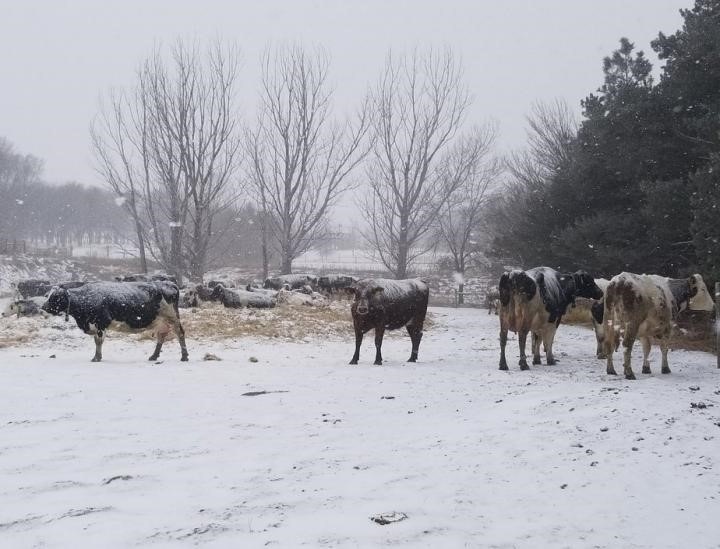Milk production affected by annual, biological rhythms
Information will allow producers to interpret effects of diet change or new technologies on herd performance within context of annual rhythm.
December 20, 2018

The amount and composition of milk produced by dairy cows appears to be more regulated by internal, annual biological rhythms than by environmental factors such as heat and humidity, according to researchers at The Pennsylvania State University who studied more than a decade of production records from herds across the U.S.
Although researchers have long recognized an annual pattern for milk composition in dairy cattle — with higher milk fat and protein concentrations observed during the winter and lower levels in the summer — the rhythms of milk yield and composition previously have not been well quantified, Penn State said.
The findings of the research are important because they better inform producers of what to expect from their cows, according to associate professor of nutritional physiology Kevin Harvatine, whose research group in the Penn State College of Agricultural Sciences conducted the study.
Harvatine noted that being more precisely aware of their cows' rhythms allows dairy farmers to better judge the effectiveness of management strategies.
The researchers employed a statistical method scientists use in the analysis of biologic time series to demonstrate predictable cycles that reveal the annual rhythms of milk yield and milk fat and protein concentration in two large data sets, Penn State said. They analyzed national milk composition information from 2000 through 2015 -- obtained from the U.S. Department of Agriculture's Agricultural Marketing Service -- and records collected from 1,684 cows in 11 Pennsylvania dairy herds from 2002 to 2011.
In general, among all herds studied, yield, fat concentration and protein concentration peaked in winter months, when days are shorter, and were lowest in summer months, when days are longest, the researchers said. The amplitude of the rhythms — the amount the highs and lows varied from the mean — were greater in the north and declined depending how far south herds were located, the research team added.
"On average, milk yield peaked in April, fat and protein yield peaked in February, fat concentration peaked in January and protein concentration peaked in December," said lead researcher Isaac Salfer, doctoral student in animal science. "The yearly rhythms of milk yield and fat and protein concentration consistently occur, regardless of region."
Until recently, dairy producers considered milk production to be governed by seasonal influences, Salfer said. They thought that cows just reacted to their environment and conditions.
"But our research is leading us to believe that cows have predictable changes in their physiology that leads to regular variation in milk production," he said. "It is shifting the way we are thinking about the seasonal changes in milk production from being a response to the environment to actually being a physiological element of the cow."
Better quantification of the annual rhythms shows that fluctuations in milk yield and composition are mainly driven by photoperiod and not strictly by environmental conditions such as heat stress, Salfer pointed out.
"That remains a hot topic -- no pun intended -- in the dairy industry," he said.
That milk production occurs in rhythms dictated by a physiological response should not be unexpected, Salfer said. Other studies have revealed that cows' milk production is responsive to photoperiod. So, any change in the amount of daylight per day will affect these kinds of rhythms, similar to the way photoperiod changes trigger annual rhythms among wildlife that account for such regular behavior as hibernation, breeding and migration.
The findings, published this month in the Journal of Dairy Science, should help prevent dairy producers from being misled by seasonal milk fluctuations, Salfer explained. This information will allow them to interpret the effects of diet changes or implementation of new technologies on herd performance within the context of the annual rhythm.
"For example, 3.6% milk fat may indicate suboptimal milk fat in January but normal milk fat in July," he said. "In addition, feeding a dietary supplement in July may appear to improve milk fat percent in the following months, but the increase may be merely a consequence of the annual rhythm of production."
Also involved in the research was Chad Dechow, Penn State associate professor of dairy cattle genetics.
USDA's National Institute of Food & Agriculture and the National Institutes of Health partially supported this work.
You May Also Like

.png?width=300&auto=webp&quality=80&disable=upscale)

